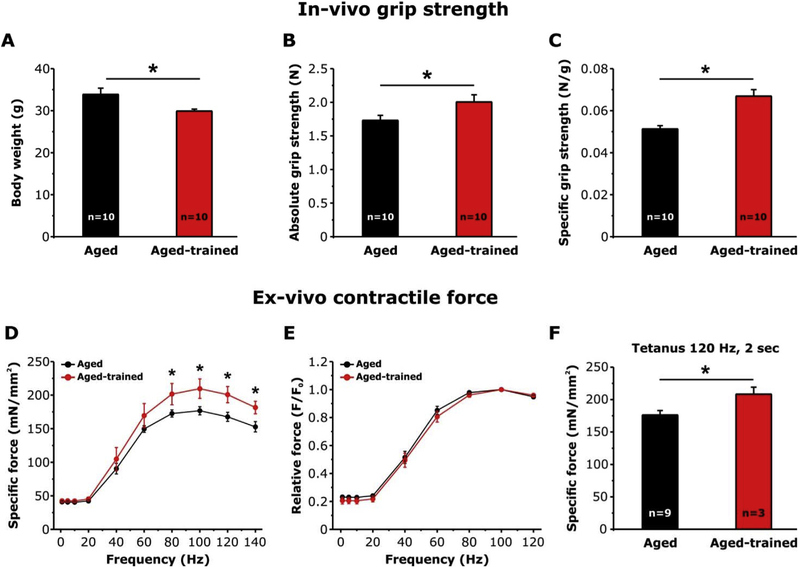Fig. 2.
Measurements of in-vivo grip-strength and ex-vivo contractile force of EDL muscles in aged and aged-trained mice. A-C) Average body weight, and absolute and specific grip strength. D-E) Specific and relative (normalized to the maximal force at 100 Hz) force-frequency curves obtained from isolated EDL muscles by applying stimulus trains from 1 to 140 Hz. F) Specific force during a single 2 s, 120 Hz tetanic stimulation recorded for the same EDL muscles showed in (D). Data are shown as mean ± SEM; n = number of mice (A–C); n = number of EDL muscles analyzed (D–F); *p < 0.01 as evaluated by two-tailed unpaired Student’s t-test in A-C and F. *p < 0.05 as evaluated by repeated measurements ANOVA followed by post-hoc Tukey test in D and E.

